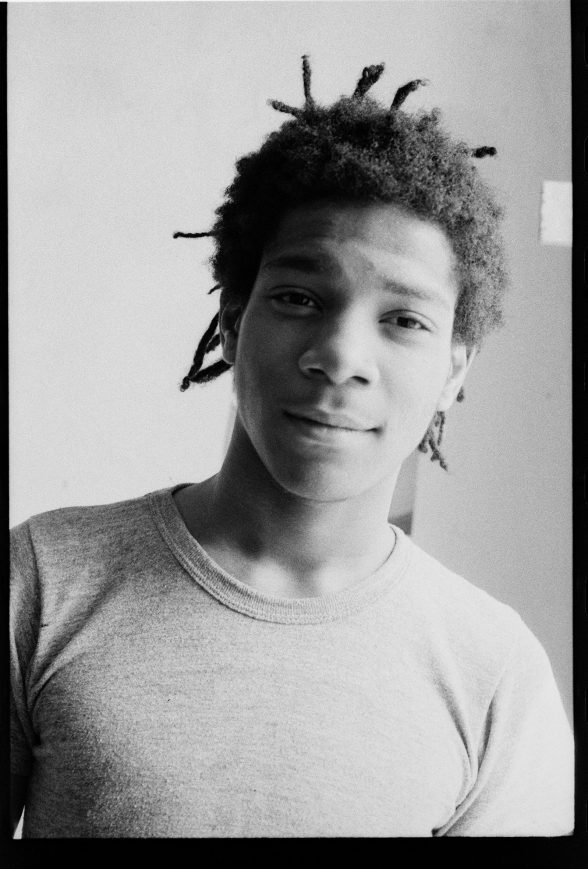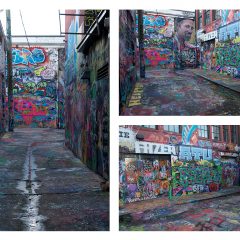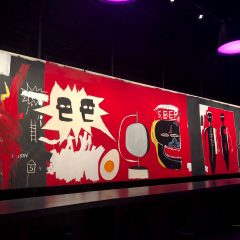It is so difficult to say anything new about Jean-Michel Basquiat, and perhaps even more difficult to say anything true. He is gone, and since his passing at the tender age of 27, serious discussions of his influences or of his work’s formal qualities have been outweighed 100-to-1 by evasive references to his charisma, his force of character, and his cunning ambition. As a maker, he is frequently portrayed as automatic, shamanistic-even. And while he is widely hailed as a genius, almost no-one attempts to explain, justify or otherwise contextualize that label.

During one scene from Sara Driver’s new documentary, Boom for Real: The Late Teenage Years of Jean-Michel Basquiat, embryologist and photographer, Alexis Adler recalls having owned a gold lamé coat which the impish young Jean-Michel (her then-lover, friend and occasional roommate) transformed one night, under cover of darkness, by taking a paintbrush to it. While on the one hand Adler’s story regurgitates the Basquiat-as-sorcerer trope that has become so common since his death, on the other hand, it hints at something genuinely interesting about his attitudes towards glamour, beauty, materials and even competition. That the film also includes a more thoroughgoing exploration of Basquiat’s early “SAMO” graffiti work than even some written surveys provide, puts it slightly ahead of the pack.
The best thing that I can say about Boom for Real, though, is that it refuses the rags-to-riches-to-addiction-to-death-and/or-redemption arc that films about great artists almost universally rely upon. By focusing narrowly on the 2-3 years (circa 1979) that Basquiat spent cutting his teeth on the streets of lower Manhattan, immediately following his departure from high school and the comfort of his parent’s home, Driver’s homage sidesteps the notion that his eventual fame was either inevitable or the most important thing about him. Instead we see glimpses of an imaginative young man who is appealing and self-assured, but still very much figuring things out.

Every biopic or documentary that I have ever seen about the late graffiti artist-turned painter hinges on the moment, in the very early 1980s, when an emboldened young Basquiat, then still in his late teens, convinced Andy Warhol, the elder-statesman of New York’s lower east side, to purchase one of his smaller works. While Boom for Real makes reference to this moment in passing, it is really a film about Basquiat’s earliest formative adult relationships, and about the creative juices in which he and his closest compatriots were steeped. Sara Driver, her partner Jim Jarmusch and Basquiat were actually friends, and that intimacy between director and subject matter shines through, even in the notable absence of Basquiat’s own words.
One unexpected gift of Driver’s approach to telling Basquiat’s story are the voices of musicians Jennifer Jazz and Felice Rosser — two black women whose relationships to the young painter have received relatively little attention to this point, and whose insights and remembrances feel particularly familial. While Jazz describes herself as a sister of sorts to Jean-Michel, Rosser, whose apartment both Jazz and Basquiat would frequently use as a crash pad, appears as a surrogate mother figure. The mere presence of these women pleasingly complicates the picture of what the New York underground was, and who helped to sustain and nourish it.
BOOM FOR REAL: THE LATE TEENAGE YEARS OF JEAN-MICHEL BASQUIAT opens Friday, May 18, 2018 at the Landmark’s Ritz at the Bourse and runs through Thursday, May 24. Ritz at the Bourse Cinema, 400 Ranstead Street, Philadelphia, PA 19106. Tickets here.
See Roberta’s take on the film in Part 1 of our two-part review.









